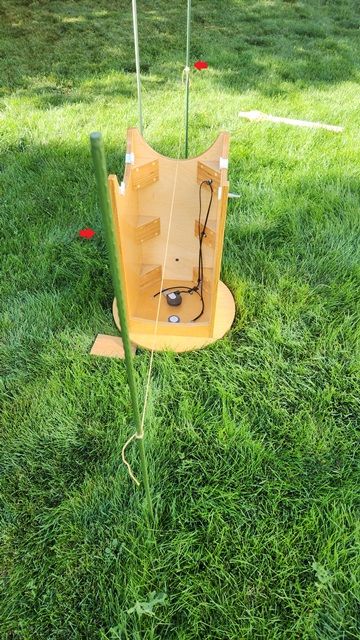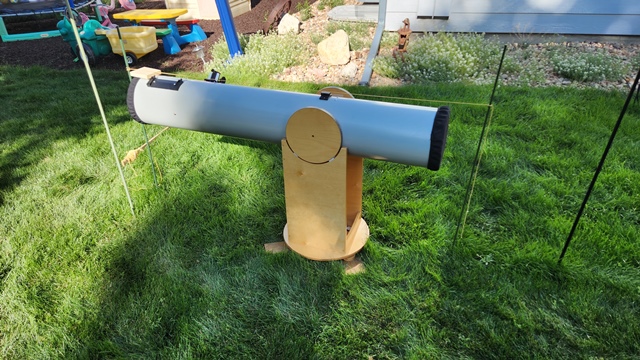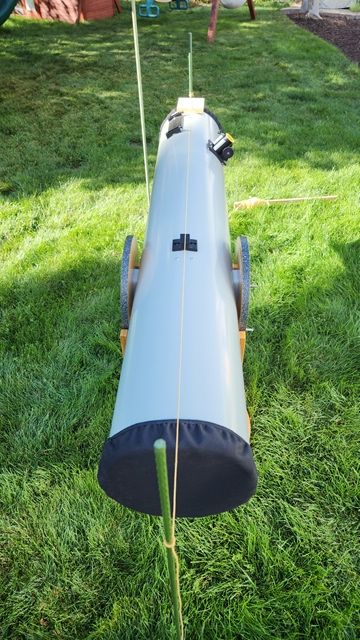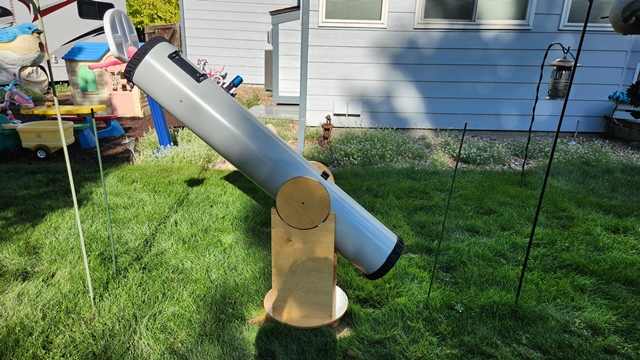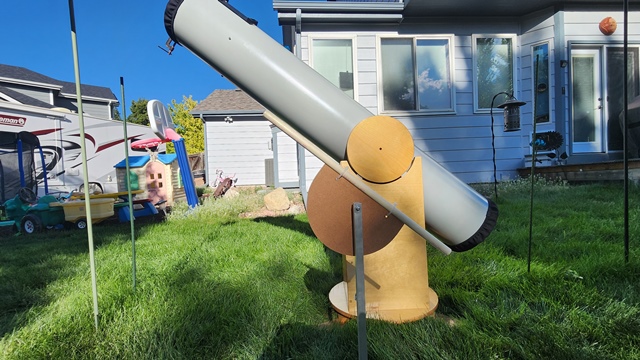You can “reverse engineer” the sundial process to find out at what clock time a shadow will point true north at your location on a particular day. Knowing this you can polar align an equatorial scope at local noon (which probably won’t be 12:00) using a shadow’s direction and a watch. This works particularly well for an observatory mounted scope. You need to include your longitude and equation of time corrections and possibly one for daylight savings time to calculate the exact time for that day. In use, point your scope north then horizontally level your R.A. and Dec axis. Mount a small thin vertical piece on top of your OTA near the cover so it can cast a shadow. When the clock time hits your local noon, the shadow points north. Make a mark and it can be used to align your scope again in the future.
At what time at your normal observing site does an object cast a shadow due north on your birthday? If you have an equatorial mount you may wish try this method of daytime alignment.
Results
Since I own only a Dobsonian mounted telescopes, I decided to modify this activity to align an 8-inch, Dobsonian mounted telescope on the celestial pole during daylight.
About 3 pm on August 16, 2024, I used my two stakes that are aligned with the celestial north to help point my 8-inch telescope at the celestial north.
I leveled the telescope's base. I stretched a line between the two stakes (noted with the red arrows) and centered the base underneath this line.
I then set my 8-inch Newtonian telescope in the base and raised the line between the two stakes such that it was just over the top of the tube.
I centered the tube along the stretched line. Now the telescope is pointing in the celestial north direction.
I used a 9-inch protractor to try to raise the tube to 40 degrees. This is the result of that effort. But I wasn't satisfied I had the tube at the correct altitude to point at the celestial pole.
So I used my quadrant to help align the tube's altitude. I set the quadrant about 3 feet from the telescope to the west. Then leveled it and raised the tube to 40 degrees, my latitude.
I could now sight along the top edge of the site tube of the quadrant and along the bottom edge of the telescope tube and make them parallel. I had to raise the telescope's tube up a bit from the position I had it in above, using the protractor.
It took me about 30 minutes to finally get to this point. I left the telescope alone until later that evening when it was dark.
About 9:20 pm, I went out back and looked in the 32mm eyepiece (38x). To my amazement, Polaris was almost centered in the Field-Of-View (FOV). It was just a bit left of being centered in the eyepiece.
At first, I was confused by the bright star in the eyepiece. It was an orange star. I never remembered seeing an orange star near Polaris before. With the 32mm eyepiece, I could not see Polaris B.
Without aligning my Telrad, it was almost pointing at Polaris.
I put in my 10mm eyepiece (122x) and I was easily able to see Polaris B. This was Polaris.
There must have been western US and Canadian wildfire smoke in the northern part of the sky, making Polaris orange in color. About a month ago, Jupiter was so red from the effects of the smoke in my area that I could have confused it with Mars.
I deem this aligning my telescope in daylight to point at the celestial pole a brilliant success. Polaris was almost centered in the 32mm FOV. I was simply amazed it was even in the eyepiece, let alone near the center of the FOV.
At what time at your normal observing site does an object cast a shadow due north on your birthday? The EOT adjustment for my birthday is -19 minutes, which would make the local time 12:41 PM MDT.
